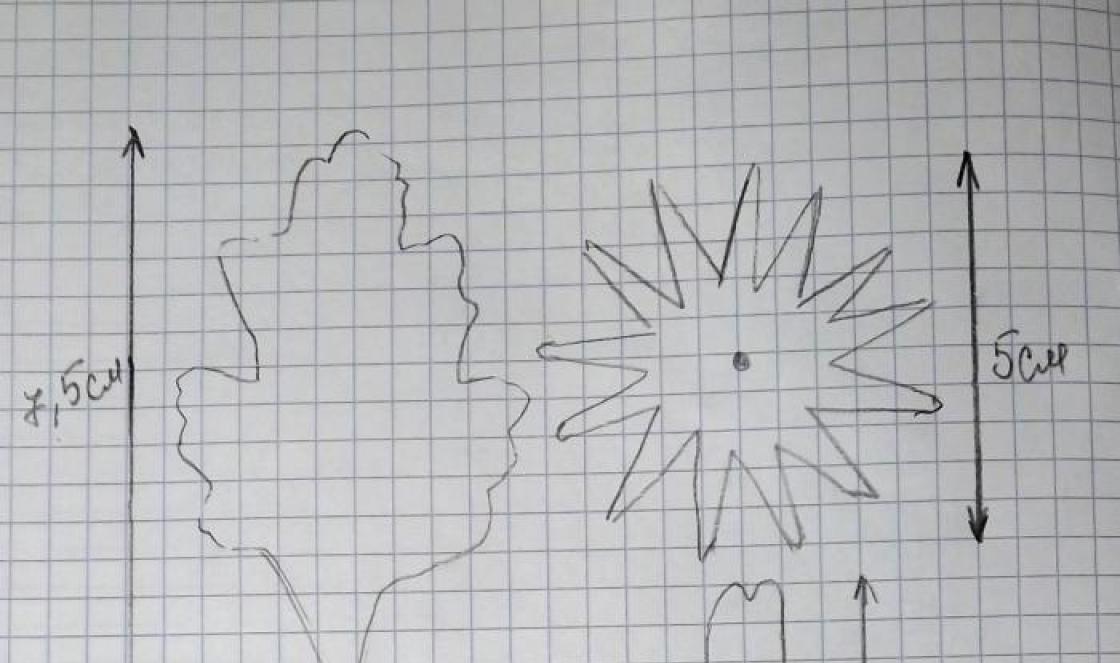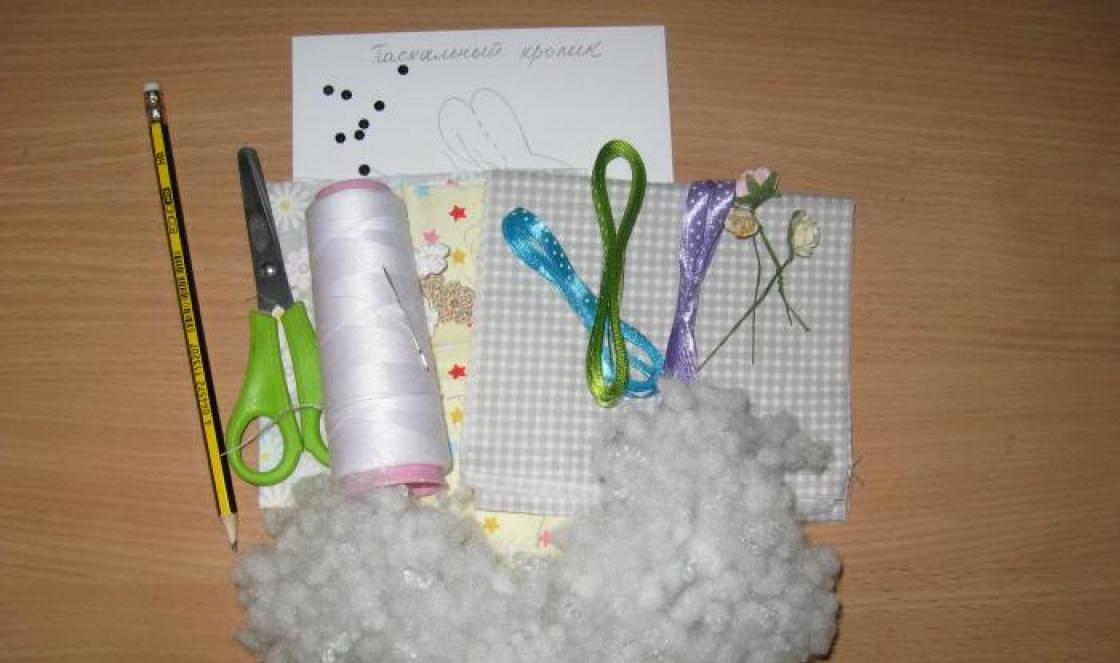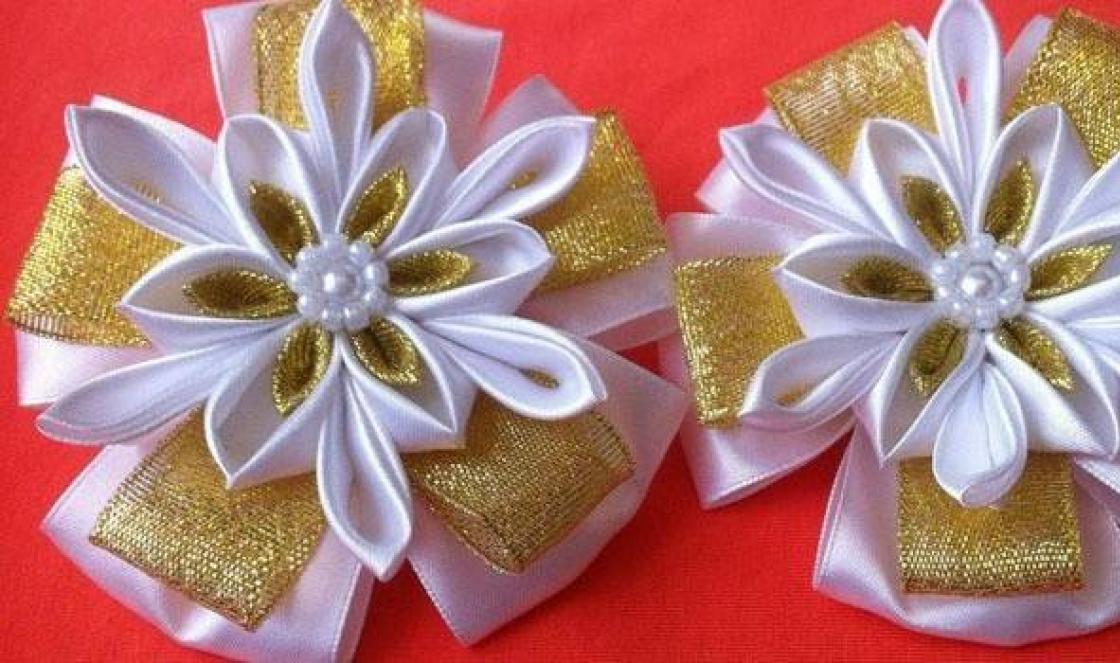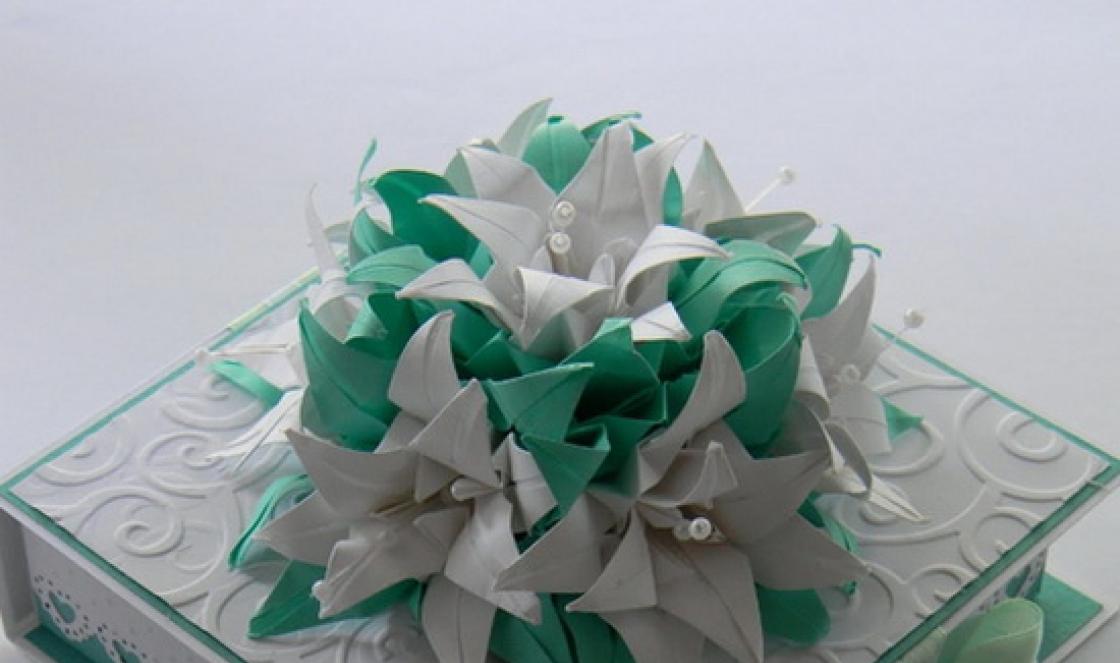The dimensions on the map have been reduced hundreds of thousands of times. A map can tell you a lot about different countries. This map shows not only Russia, but also other countries. How can you find out which country is which?
There is always a border between all countries. I will now draw a pointer along the Russian border, and you will see how large a territory our country occupies. I will outline the borders of other countries that are located next to Russia, and you will see how much smaller the territories of other countries are than Russia.
Didactic game "Travel". Guys, let's travel with you to different countries, I will throw a ball to you, at the same time say an unfinished sentence, and you must catch the ball, complete the sentence and return the ball back.
Russians live -
The English live -,
The French live -
Americans live -
The Japanese live -
Italians live -
The map told us that our country is very large, one might even say huge. What else can the map tell you?
Look how many cities there are in Russia. Name what cities you know. The map told us that there are a lot of cities in Russia. What else can the map tell you? What are these blue wavy lines, of which there are a lot?
These are rivers. There are also many rivers in Russia. What rivers do you know? What do the blue spots mean?
Yes, these are seas and lakes.
What other color do you see on the map? Is there a lot of it? What do you think the color green means?
Physical education minute
How are you living? Like this
How are you going? Like this
How are you running? Like this
Do you sleep at night? Like this
Yes, green is a forest. Look how many forests there are in Russia.
Forest is a tree from which a huge number of different objects are made; paper on which books are printed, from which notebooks, albums and much more are made. Berries and mushrooms grow in the forest, and various animals live. The forest is a natural wealth, there is a lot of it, but it must be treated very carefully. What other color do you see on the map?
What does it mean? Yes, these are mountains. Mountains have names too, let's read some of them
Minerals are mined in the mountains. Icons on the map indicate where which minerals are mined. What are minerals?
This is what is in the ground and what a person really needs for life. For example, coal, various ores, which are necessary for the production of metals; gold, diamonds, which constitute the country's wealth. And on the map you see a dark yellow color. These are steppes and deserts. In the steppe the vegetation is very poor - grass and low-growing bushes, and in the desert there is only sand.
Guys, now let's play.
Guys, now close your eyes and imagine that you are flying on an airplane.
Vast country
If it's a long, long, long time,
We're going to fly on the plane,
If it's a long, long, long time,
We should look at Russia.
We'll see then
And forests and cities,
Ocean spaces,
Ribbons of rivers, lakes, mountains...
We will see the distance without edge,
Tundra, where spring rings.
And then we will understand what a big, vast country our Motherland is.
Program content: teach children to distinguish by appearance and name
vegetables and fruits, items of clothing, teach to see the beauty of nature, understand
the teacher’s question and answer it, consolidate the ability to act according to
signal, develop attention, speech, thinking, cultivate a love of nature,
curiosity
Materials: pictures depicting fruits and vegetables, their dummies, two
baskets, illustrations of autumn, colorful autumn leaves,
items of clothing, puddles made of paper, audio recording.
Integration of educational areas: communication, socialization,
physical culture.
Node progress
Surprise moment. The doll Katya comes to visit the children and greets
children. The teacher draws attention to the sad appearance of Katya’s doll, clarifies
What's happened. Explains to the children that the doll is sad because summer is over,
autumn has come.
Conversation with children “What did autumn give us?” The teacher asks the children,
Is it possible to be sad because autumn has come? (Children's answers, their
discussion). The teacher summarizes the answers that there is no need to be sad because
Summer has passed, but autumn has come to visit us. Every season is beautiful
to his own and brings his natural gifts to people. The teacher asks the children
What do you think autumn has given us? (Children's answers). Educator
generalizes that in the fall many vegetables and fruits ripen, and they contain
vitamins we need for health.
Didactic exercise “Learn, name and find” On one of the tables
in front of the children there are models of fruits and vegetables, and on the other there are pictures of
depicting fruits and vegetables. The teacher invites the children to take
one of the vegetables or fruits, show everyone, name it, and then find
a picture of him.
Didactic game “Vegetables and Fruits” There are two baskets and dummies on the table
fruits and vegetables. The teacher suggests putting vegetables in one basket,
another fruit. Children lay out, the teacher specifies: onion, tomato,
cucumber, pepper are (vegetables), and apple, pear, orange, lemon are (fruits).
Game “Collect an autumn bouquet” The teacher shows illustrations with
image of autumn, the children look at and answer the teacher’s questions about
content. The teacher draws attention to the fact that in the fall the leaves become
yellow, red, brown, they fall and cover the ground with beautiful
carpet Draws attention to the leaves lying on the floor, offers to collect and
make a beautiful autumn bouquet out of them. Children collecting leaves, teacher
makes a bouquet.
Game “Let's go around the puddles” The teacher reports that it often rains in the fall,
after which puddles appear on the ground, but we are not afraid of puddles, we will go
Let's go for a walk and go around all the puddles. The teacher draws the children’s attention to the puddles,
offers to go for a walk, but avoiding all the puddles. The music is playing, the children are walking, not
stepping on puddles.
Didactic exercise “Let’s dress the doll for a walk”Teacher,
turning to the doll, he reminds that there is no need to be sad because

autumn, then tells the children that the doll Katya says that you can’t walk in the fall
on the street. The teacher asks the children if this is true. (Children's answers, their
discussion). The teacher generalizes that in the fall you can walk outside,
you just need to wear the right clothes. Invites children to consider
clothes and choose the one that is suitable for a walk in the fall. Children perform
exercise.
Doll Katya thanks the children and explains that now she will never
sad in the fall, says goodbye to the children and leaves.
Bottom line, who came to visit?
Why was Doll Katya sad?
why shouldn't you be sad in the fall?
what does autumn give us?
Target:
Educational objectives:
Developmental tasks:
Educational tasks:
Equipment:
Preliminary work:
Educator:
Communicative exercise “Hello!”
I came here in the morning
Hello my friends,
Hello sun and earth,
It’s me... (children take turns calling themselves by name)
Hello!
Educator: The guys came to visit us. Let's say hello to them too.
Children: Hello!
Educator: Guys, do you like to visit?
Educator: Who did you visit?
Children: with grandmother, with grandfather. With friends. From relatives, etc.
Educator: have you visited a fairy-tale hero?
Children: no.
Educator: Today I suggest you go to visit a fairy-tale hero. And you will find out who we are going to if you guess my riddle:
I won't, I won't
I will offend the dishes.
I will, I will, I will do the dishes
And love and respect!
Children: this is Fedor’s grandmother!
Educator: correct. We will go to visit Grandma Fedora. But how do we get into the fairy tale?
Children: Using a magic wand, let's say magic words.
Educator: I suggest you stand up, close your eyes and say the magic words: crible, crable, boom!
(the teacher puts on a scarf and takes on the role of Fedora)
Fedora: Hello, dear guests!
Children: Hello, Grandma Fedora! We came to visit you
Fedora: I'm so glad to see you! I really love guests. Guys, this morning the postman Pechkin brought me a message asking me to solve riddles. Can you help me?
Fedora: Come to the chairs and listen carefully.
Making riddles.
Among spoons I am a colonel.
And my name is... (Ladle!)
Soup, salad, mashed potatoes, cutlets
Always served in... (Plate)
And for tea and yogurt
Substitute, my friend, ... (Cup)
On the stove is the boss of the pots.
Fat, long-nosed... (Kettle)
A boat is floating on my plate.
I put the boat of food into my mouth.
There will be delicious food
With a golden crust,
If you use...
That's right, with a frying pan!
Pictures of dishes are displayed on a typesetting canvas.
Fedora: Guys, how can we call all these items in one word? (Dishes) .
Fedora: What are the dishes for? (Children's answers).
There's a story going on
Fedora: There was a time when the dishes ran away from me, but then I realized that they needed to be loved and looked after. How should you care for her? You know? Guys, I want to tell you that dishes have different purposes. The utensils in which food is prepared are called kitchen utensils. The utensils from which people eat are called tableware. The utensils from which tea is drunk are called tea utensils.
(Pictures with sets of dishes are displayed).
– Dishes can also be made from different materials.
- Tea and tableware are made of porcelain. It's called porcelain.
- Kitchen utensils are made of metal. How can you call it – metal.
– There are dishes made from other materials, look and touch some items:
- This is a plate made of clay (brown and rough) - it is clay;
- The spoon is made of wood - wooden;
- Glass glass (thin and fragile material) – glass;
- The mug is made of plastic, it doesn’t break – it’s plastic.
– You and I found out what material dishes are made of. Let's repeat it again: from porcelain - porcelain, etc.
Fedora: Guys, what do you know about dishes? Name the dishes shown in the pictures and tell us what they are for.
For example: A mug is needed to... (drink tea) from it.
Fedora thanks the children, and now I suggest doing finger gymnastics.
"Mom's Helpers"
One, two, three, four, Hitting your fists against each other.
We washed the dishes:
Teapot, cup, ladle, spoon Bend your fingers, starting with the thumb
And a big ladle.
We washed the dishes: One palm slides over the other.
We just broke the cup, Bend your fingers, starting with the thumb.
The ladle also fell apart,
The teapot's nose is broken.
We broke the spoon a little,
This is how we helped mom. Hitting each other's fists.
Fedora: Well done, what, can you help me sort the dishes into groups? Place tableware on the first table and kitchen utensils on the second. on the third - tea room. Look, make no mistake!
(children complete the task)
Fedora: now let’s check if you have arranged my dishes correctly?
Fedora: Well done, you know everything.
While you were laying out the dishes, my samovar began to boil. Look how he was boiling: at first he puffed slowly, and then he let out all the steam: “Pf-pf-pf.” Let's show together how the kettle boiled.
(Breathing exercise “The samovar is boiling”)
Fedora: And now I propose to play. Do you agree?
Ball game
— Formation of nouns with a diminutive suffix: cup-cup, spoon-spoon, etc.
Fedora offers envelopes with “broken dishes.”
Game "Broken Cups" Look how beautiful the cups I have in these pictures, and in the envelopes there are the same cups, but broken. Help me glue them together: put the pieces together correctly.
Lesson summary
– Remember what kind of dishes there are, how they are used?
- The utensils in which food is prepared are needed in the kitchen - called cookware.
- The utensils used during dinner at the table are tableware.
- The utensils for drinking tea are called tea utensils.
Mom has a lot of dishes in the kitchen:
There is a teapot, a ladle, a coffee pot and a dish,
Pots according to height are on the shelves,
Buckets and shovels hang on the walls.
The table service is ready for dinner,
And the tea pot stands beautifully on the shelf.
And in the breadbox there is bread under a beautiful napkin
Fragrant and delicious for dinner.
Salt poured into a painted salt shaker,
Place the oil carefully in the oil can,
All the vegetables are cut into the salad bowl,
And the tureen is already smoking on the table.
Food is stored and prepared in dishes,
Housewives dry and wash dishes.
And, like from Fedora, she will not run away,
If it sits clean on the shelf.
Video lessons
Self-analysis of the teacher
Target: Expand children's understanding of surrounding objects.
Educational objectives: Expanding ideas about dishes, their purpose, the parts of which they consist.
Developmental tasks: Development of coherent speech, phonemic perception, speech hearing; visual attention; logical thinking; fine and gross motor skills.
Educational tasks: Formation of cooperation skills, a positive attitude towards participation in the lesson, and careful handling of dishes. Cultivation of diligence, the desire to complete the work started.
Equipment: color cards with riddles, images of kitchen, dining and tea utensils, object pictures with images of utensils, cut-out pictures, utensils.
Preliminary work: Reading K. Chukovsky’s poem “Fedorino’s Mountain”, looking at illustrations, utensils, did. game “What for what? ”, compiling descriptive stories about dishes, guessing riddles, learning words for the exercise “Mother’s Helpers”.
1. This GCD solved didactic tasks to implement the principle of integration of educational areas:
educational area “Communication”: clarify, enrich, activate the vocabulary on the topic “Tableware”, develop coordination skills, inflection, word formation, the ability to answer with a complete common sentence.
educational area “Socialization”: consolidate behavioral skills in games and conversations;
educational area “Health”: develop auditory and visual perception, smooth long speech exhalation;
educational field “Physical culture”: form precise coordinated movements in combination with speech.
During the NOD, the unity of correctional, educational and educational tasks was observed.
2. Organization of direct educational activities (OED)
The educational activity was carried out in the middle with a subgroup of children and lasted 19 minutes 46 seconds.
All sanitary and hygienic requirements were met: furniture was selected according to the height of the children, the room was ventilated, lighting met the standards.
To create interest, the teacher played the role of Fedora’s grandmother.
Directly educational activities were built in a single game plot.
Changing types of activities (play, communication, perception of fiction, motor) contributed to maintaining the attention and performance of children throughout the entire educational activity.
During the activity, physical exercises were used to relieve muscle fatigue and breathing exercises.
3. The structure of direct educational activities (GED).
In its structure, educational activities are designed in such a way as to arouse and maintain cognitive interest.
The first part included an organizational moment: asking riddles to stimulate auditory perception and attention, motivation.
The second part consisted of a conversation, didactic games, looking at illustrations, and sedentary play, which helped maintain the attention and performance of children throughout the entire educational activity.
The third part is the summary.
4. Methods and techniques of teaching.
Methods and techniques are selected in accordance with educational, developmental and educational objectives.
In the course of direct educational activities, visual, verbal and practical, game methods were used, aimed at using speech, cognitive, motor, practical skills and abilities, and their improvement.
The proposed games and exercises were selected according to the age of the children, which contributed to the solution of the assigned tasks for the development of attention, imagination, memory, and speech.
Throughout the entire activity, cognitive interest was maintained using a game plot, a surprise moment, games, and illustrations.
In the process of educational activities, educational goals were also pursued: to cultivate love and respect for dishes, to be able to see their beauty, and the desire to preserve them.
Various ways of including children in the educational process were used: intonation of speech, emotional expressiveness, and the speech capabilities of each child were taken into account.
To expand and consolidate children’s knowledge about dishes, such techniques as a conversation about dishes, didactic games were used: “Name it affectionately”, “What are the dishes for?”, “Broken cups”, coordination of speech and movement: physical training “Mom’s Helpers”, exercise for a long speech exhalation “Samovar”.
To activate mental activity, searching questions were asked (“why?”, “what do you think?”).
In the process of direct educational activities, work was continuously carried out on expanding, enriching, clarifying the children’s vocabulary, and the ability to coordinate words in sentences.
5. Effectiveness.
In the NOD, I believe that the set goal and objectives have been achieved.
Goal: to generalize and consolidate knowledge about the seas and marine life.
Tasks:
Educational:
- define the sea;
- introduce the seas;
- consolidate knowledge about marine life;
- strengthen your drawing skills.
Educational:
- develop attention, thinking, imagination;
- continue to enrich and expand children's active vocabulary;
- continue to develop an interest in the world around us.
Educational:
- evoke an emotional response;
- cultivate a caring attitude towards nature and the seas;
- cultivate a desire to protect the environment.
Equipment: globe, subject pictures depicting seas and marine life, subject pictures depicting sea life, audio recording "The Sound of the Sea" , a video about the inhabitants of the seas.
Preliminary work: looking at illustrations depicting the inhabitants of the seas, reading stories about the seas and their inhabitants, getting acquainted with the globe.
Logic of direct educational activities:
Listening to an audio recording of the sound of the sea.
Educator: Guys, what did you hear just now? (children's answers)
Today we will talk about the sea and its inhabitants.
The sea is a large body of salt water. The sea is a part of the ocean.
Look at the globe. On it we can see the seas. (The teacher and the children look at the sea globe) Let's see how many seas we have. There are a lot of them. I will name you a few: the Black Sea, the Azov Sea, the Baltic Sea, the Caspian Sea, the Barents Sea. Our country Russia is washed by 13 seas.
Now let's get acquainted with the sea inhabitants. Listen to the first riddle:
He hits the ball with his nose.
Both the French and the Finn know:
Loves to play... (dolphin)
Dolphins are mammals.
They are agile and dexterous, voracious predators, living mostly socially, found in all seas, even rising high into rivers, feeding mainly on fish, mollusks, and crustaceans; sometimes they attack their relatives. They are also distinguished by their curiosity and traditionally good attitude towards people.
It's like a huge house,
But calm, modest.
He eats in the sea and sleeps in the sea -
This is how he lives in the world... (whale)
Whales are the largest mammals on Earth. They are mustachioed and toothy. Toothed whales are sperm whales.
This fish is an evil predator,
It will swallow everyone wholeheartedly.
Showing her teeth, she yawned
And sank to the bottom... (shark)
Sharks belong to the fish family. There are currently 450 known species of sharks. Most sharks are predators. There have been cases of attacks on people.
A transparent umbrella floats.
“I’ll burn you!” - threatens. - Don’t touch!
She has paws and a belly.
What's her name? (Jellyfish)
Jellyfish are mysterious and incredibly beautiful inhabitants of the seas of our planet. Meeting them can be fatal for a person, however, people always strive to explore them and observe their lives. They are one of the most ancient inhabitants of the Earth, which have not been fully studied, since they live at a depth of up to 10 thousand meters. In some countries, such as Japan and China, jellyfish are eaten.
It pinches painfully with its claws
And shouts: “I’ve had enough!
I'm tired. I am not your slave."
Scared the neighbors... (crab)
Crabs belong to the crustacean family. Sometimes they reach enormous sizes.
Looks so much like a horse
And he lives in the sea too.
That's a fish! Jump and jump -
The sea jumps... (horse)
Seahorses live in tropical and subtropical seas. They lead a sedentary lifestyle, attaching their flexible tails to plant stems and changing body color, completely blending into the background. This is how they protect themselves from predators and camouflage themselves while hunting for food. Skates feed on small crustaceans and shrimp. The tubular stigma acts like a pipette - the prey is drawn into the mouth along with water.
Both on land and in water -
He carries the house with him everywhere.
Travels without fear
In this house... (turtle)
Sea turtles are reptiles. They have remained virtually unchanged for millions of years since they appeared on the planet. Sea turtles differ from their land-based relatives in that they have fins instead of paws. Turtles live on average 80 years.
What kind of ball floats with spikes,
Quietly waving its fins?
You just can’t take it in your hands.
This ball is... (fish-urchin)
The fish is a hedgehog from the fish family of the order Pufferfish.
There are 6-8 genera, distributed in almost all tropical seas. Up to 60 cm long. The body, which takes the shape of a ball when in danger, is covered with sharp spines. The skin and entrails of the fish are poisonous.
Watch a video about the inhabitants of the deep sea.
Educator: Guys, you saw the beauty of the underwater world, but
many species of inhabitants of the deep are threatened with almost complete extinction, both for natural reasons and due to human activity. Tell me, guys, how does man influence the disappearance of marine life? (children's answers)
And now, I suggest you draw the sea and marine life.





